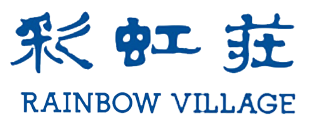-
-
-
Technology
-
Products
-
-
Contact
What Are the Environmentally Friendly Technologies in the Weaving Process?
1. Application of Eco-Friendly Fibers
- Recycled Fibers: The use of recycled fibers such as recycled polyester and recycled cotton helps reduce dependence on virgin resources.
- Bio-based Fibers: Bio-based fibers, such as polylactic acid (PLA) fiber, are adopted due to their biodegradability and reduced environmental impact.
- Natural Fibers: Preference is given to natural fibers like organic cotton and hemp fiber, reducing the use of synthetic fibers.
2. Green Weaving Technologies
- Dye-Free Coloration Technology: Using micro-nano embedded spinning technology for coloration directly during the spinning process, eliminating the need for traditional dyeing and significantly reducing water consumption and wastewater generation.
- One-Piece Weaving Technology: Applying one-step forming technology in home textile weaving to produce three-dimensional, finished products directly from the loom, avoiding cutting and sewing processes and minimizing waste.
- Digital Design and Production: Utilizing CAD software for virtual fabric design reduces paper sample usage and resource waste caused by repeated revisions.
3. Energy and Emission Reduction Technologies
- High-Efficiency Energy-Saving Equipment: Adopting low-energy dyeing and finishing equipment and high-efficiency water-saving textile machines to reduce energy consumption.
- Wastewater Treatment and Reuse: Using technologies such as fluidized bed reactors to treat wastewater from water-jet looms, achieving a reuse rate of over 90% and significantly reducing wastewater discharge.
- Energy Recovery and Utilization: Biogas generated during the treatment process is used as an energy source for power generation or heating, improving overall energy efficiency.
keywords: What Are the Environmentally Friendly Technologies in the Weaving Process?
Related information
Add:NO. 315 BINZHONG ROAD, BINHAI INDUSTRIAL ZONE, KEQIAO DISTRICT
312000 SHAOXING , ZHEJIANG SHENG , CN-ZJ , CHINA , CN
E-mail:business@cnrbv.com
Tel:+86-575-85621721
© Zhejiang Rainbow Village Printed and Dyeing Co.,Ltd
COOKIES
Our website uses cookies and similar technologies to personalize the advertising shown to you and to help you get the best experience on our website. For more information, see our Privacy & Cookie Policy
COOKIES
Our website uses cookies and similar technologies to personalize the advertising shown to you and to help you get the best experience on our website. For more information, see our Privacy & Cookie Policy
These cookies are necessary for basic functions such as payment. Standard cookies cannot be turned off and do not store any of your information.
These cookies collect information, such as how many people are using our site or which pages are popular, to help us improve the customer experience. Turning these cookies off will mean we can't collect information to improve your experience.
These cookies enable the website to provide enhanced functionality and personalization. They may be set by us or by third-party providers whose services we have added to our pages. If you do not allow these cookies, some or all of these services may not function properly.
These cookies help us understand what you are interested in so that we can show you relevant advertising on other websites. Turning these cookies off will mean we are unable to show you any personalized advertising.


